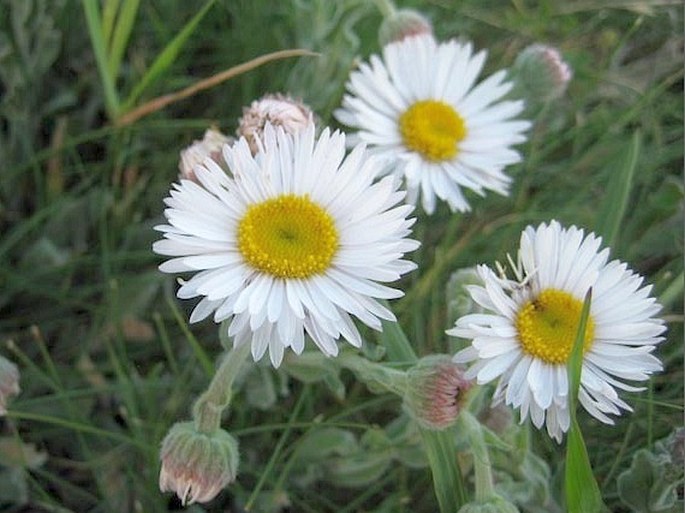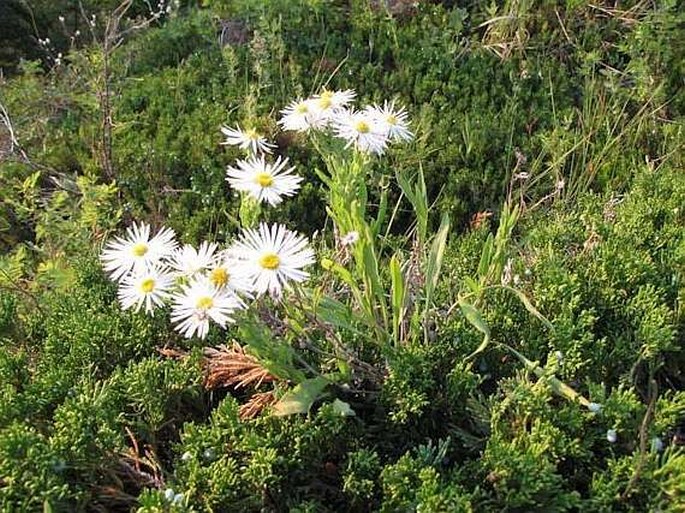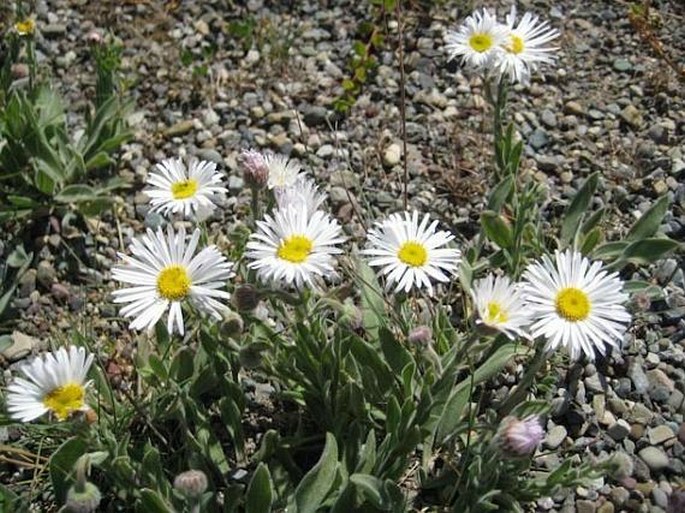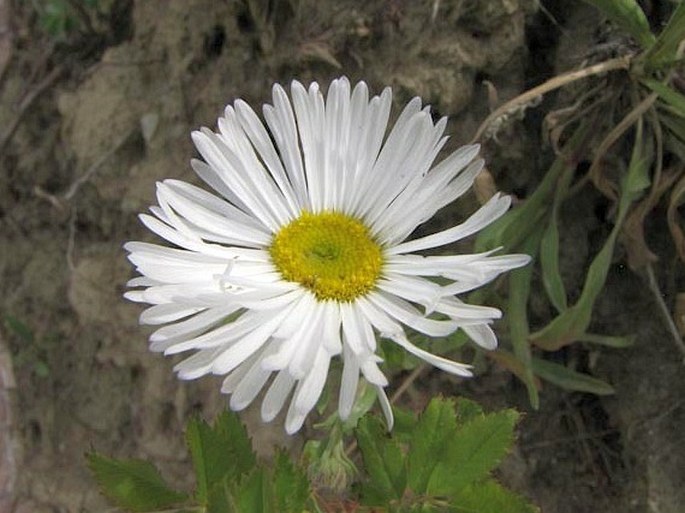Syn.: Erigeron canescens (Hook.) Torr. et A. Gray, nom. illeg., Erigeron subcanescens Rydb.
Family: Asteraceae Bercht. et J. Presl

Distribution: From Alaska and Yukon through Alberta, British Columbia and prairie provinces of Canada. In US through western states of Washington, Idaho, Montana and Dakotas to south to Arizona and New Mexico, except Oregon, Nevada and California.
Ecology: Prairie grasslands, rocky or sandy, to spruce and tundra northward; 1300–3000(–3600) m. Blooms from June to August.

Description: Perennial herb. Stems 10–25 cm tall, tufted, greyish to olive green, surface with short, stiff hairs; from deep taproot. Basal leaves are petiolate, spatulate, 2–8 cm long, 2–15 mm wide, prominently 3 veined, margins smooth; stem leaves 10 or more, reduced in size upward. Flower heads 1–4 per stem; heads 2–3 cm across; bracts thickened on the back, borne in 3–4 overlapping rows; ray florets 30–100, white or pinkish, 5–15 mm long; disc florets numerous, yellow, 2–7 mm long. The fruit is an achene with pappus.
Notes: As the plant grows in tufts, hence both the Latin and the common names.



These images were taken in Canada, Alberta, Calgary, Confluence Park (summer 2013).


